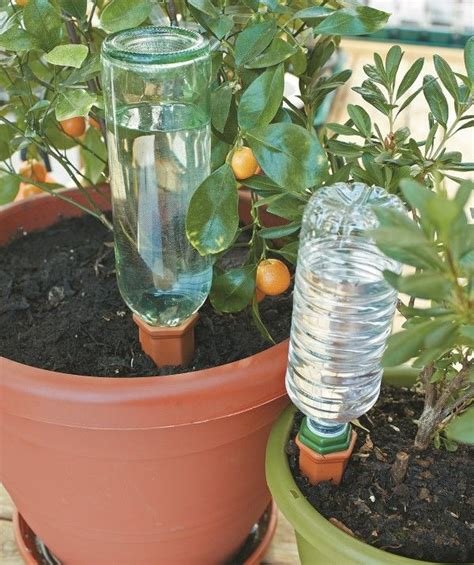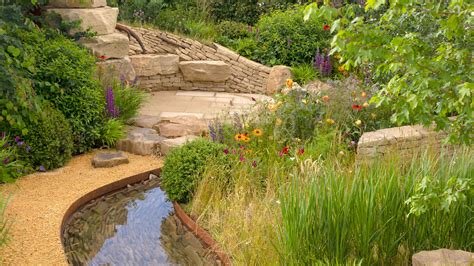Tips for Maintaining Your Garden While on Vacation
Are you worried about leaving your garden unattended while you go on vacation? With a little bit of planning and preparation, you can ensure that your garden stays healthy and beautiful even in your absence. In this blog post, we will provide you with valuable tips for maintaining your garden while on vacation. From choosing low-maintenance plants to setting up efficient irrigation systems and arranging for a trusted friend or professional service to water your plants, we’ve got you covered. By implementing these strategies, you can enjoy a worry-free vacation without having to stress about the well-being of your garden. Let’s dive into the details of how you can keep your garden thriving while you’re away.
Choosing low-maintenance plants for your garden
When it comes to maintaining a garden, choosing low-maintenance plants can save you a lot of time and effort. Low-maintenance plants are those that require minimal care, making them perfect for people with busy schedules or those who are new to gardening.
One option for low-maintenance plants is succulents, which are known for their ability to store water in their leaves and stems, reducing the need for regular watering. Another choice is perennials, which come back year after year without much intervention. These plants often have deep root systems that make them more drought-resistant and less reliant on frequent watering.
Consider adding native plants to your garden as they are well-adapted to the local climate and soil, reducing the need for fertilization and pest control. Groundcovers are another low-maintenance option, as they help to suppress weeds and reduce the amount of watering needed for the soil beneath them.
By choosing low-maintenance plants for your garden, you can enjoy the beauty of a thriving garden without the constant need for tending and care. With the right selection of plants, you can create a lush and vibrant garden that requires minimal effort to maintain.
Implementing an efficient irrigation system
When it comes to maintaining a healthy and thriving garden, an efficient irrigation system is essential. Not only does it help to conserve water, but it also ensures that your plants receive the right amount of hydration without the risk of over or under-watering. One of the first steps in implementing an efficient irrigation system is to assess the layout of your garden and the specific needs of your plants. Different plants require different amounts of water, so it’s important to consider this when planning your irrigation system.
Once you have a clear understanding of your garden’s layout and your plants’ water requirements, you can begin implementing the actual system. This may involve installing drip lines, soaker hoses, or a combination of both, depending on the size and arrangement of your garden. Drip lines are ideal for delivering water directly to the roots of your plants, while soaker hoses are great for larger, more spread-out areas. By incorporating these components into your irrigation system, you can ensure that the water is being distributed where it’s needed most.
In addition to choosing the right components for your irrigation system, it’s also important to incorporate smart technologies that can help optimize water usage. This may include programmable timers, moisture sensors, and weather-based controllers that adjust the watering schedule based on environmental conditions. These smart features can not only help to conserve water, but they can also prevent the risk of over-watering, which can be detrimental to the health of your plants.
Lastly, regular maintenance and monitoring are essential for ensuring the long-term efficiency of your irrigation system. This may involve checking for leaks, adjusting water pressure, and replacing any damaged or worn-out components. By staying proactive and addressing any issues promptly, you can help maintain an efficient irrigation system that keeps your garden healthy and vibrant.
Mulching to retain moisture and suppress weeds
One of the most effective methods for keeping your garden healthy and thriving is mulching. By adding a layer of mulch to your garden beds, you can help retain moisture in the soil and prevent the growth of weeds. This not only helps to reduce the need for frequent watering but also saves you time and effort in the long run.
When choosing a mulch for your garden, consider options such as wood chips, straw, or shredded leaves. These materials help to insulate the soil, keeping it cool in the summer and warm in the winter, while also providing a barrier that prevents weed seeds from germinating.
Proper mulching techniques can also improve the overall appearance of your garden, giving it a neat and well-maintained look. It’s important to apply mulch to a depth of about 2-4 inches, making sure to leave some space around the base of plants and trees to prevent rot and disease. Additionally, be sure to replenish the mulch layer as needed to maintain its effectiveness.
By incorporating mulching into your gardening routine, you can create an environment that is conducive to the growth of healthy plants while minimizing the need for constant weeding and watering. With the right mulching practices, you can enjoy a beautiful and flourishing garden with minimal maintenance.
Setting up a self-watering system for potted plants
Setting up a self-watering system for your potted plants can be a game changer, especially if you have a busy schedule or tend to forget to water your plants. This system ensures that your plants receive the right amount of water at regular intervals, keeping them healthy and thriving.
One way to set up a self-watering system is to use a commercially available self-watering pot. These pots come with a built-in reservoir at the bottom, which allows the plants to draw water as needed. Simply fill the reservoir with water and let the pot do the rest!
If you prefer a DIY approach, you can create a self-watering system using a simple wicking method. This involves placing a wick, such as a piece of cotton rope or felt, in the potting soil and submerging the other end in a reservoir of water. The wick will draw water from the reservoir into the soil, keeping it consistently moist.
Whichever method you choose, setting up a self-watering system for potted plants can save you time and effort while ensuring that your plants are well taken care of, even when you’re not around.
Arranging for a trusted neighbor or friend to water
When you are going on vacation, it is important to make arrangements for someone to take care of your garden in your absence. Instead of hiring a professional garden sitter service, you can simply ask a trusted neighbor or friend to water your plants. This not only saves you money, but also gives you peace of mind knowing that someone you trust is taking care of your garden.
Before leaving, make sure to provide clear instructions on how often the plants need to be watered and the correct method for watering them. You can also show them where you keep your gardening tools and supplies in case they need to use them. Additionally, it is helpful to leave a contact number in case they have any questions or concerns while you are away.
Offering a small token of appreciation, such as a gift or a post-vacation favor, is a nice gesture to thank your neighbor or friend for taking care of your garden. This will also show your gratitude and strengthen your relationship with them.
Arranging for a trusted neighbor or friend to water your plants is a great way to ensure that your garden stays healthy and beautiful while you are away, without the added expense of hiring a professional service. It also fosters a sense of community and trust among neighbors, as you are mutually helping each other out when needed.
Hiring a professional garden sitter service
When you’re going away on vacation, it’s important to make sure that your garden is well taken care of in your absence. One option to consider is hiring a professional garden sitter service. These services provide experienced and knowledgeable gardeners who will come to your home and take care of all your garden needs while you’re away. This can include watering your plants, mowing the lawn, weeding, and even harvesting fruits and vegetables if you have a vegetable garden.
By hiring a professional garden sitter service, you can have peace of mind knowing that your garden is in good hands. These professionals have the expertise to care for a wide variety of plants and can ensure that everything is well-maintained while you’re away. They can also spot and address any issues that may arise, such as pest infestations or diseases, before they become more serious problems.
Another benefit of hiring a professional garden sitter service is that they can provide personalized care for your specific garden and plants. They can follow any specific watering or care instructions you have for certain plants, and can tailor their services to meet the unique needs of your garden. This individualized attention can make a big difference in the health and vitality of your garden while you’re away.
Overall, hiring a professional garden sitter service can be a great investment to ensure that your garden continues to thrive while you’re on vacation. It allows you to relax and enjoy your time away, knowing that your beloved garden is being well looked after by experienced professionals.
Prepping your garden before leaving for vacation
When you’re getting ready to go on vacation, the last thing you want to worry about is the well-being of your garden while you’re away. But with some careful planning and preparation, you can ensure that your plants will stay healthy and happy in your absence.
One of the first things you can do to prep your garden for vacation is to choose low-maintenance plants that are drought-resistant and don’t require a lot of upkeep. Succulents, cacti, and certain types of ornamental grasses are all great options for gardens that will be left unattended for an extended period of time.
Another important step in prepping your garden for vacation is to set up an efficient irrigation system. Whether it’s a soaker hose, a drip irrigation system, or a timed sprinkler, having a method in place to ensure that your plants get the water they need while you’re away is crucial to their survival.
Once you’ve chosen the right plants and set up a reliable irrigation system, a layer of mulch can help retain moisture in the soil and suppress weeds while you’re gone. Mulching before you leave will create a protective barrier that can help your garden stay healthy in your absence.
Frequently Asked Questions
What are some low-maintenance plants for a garden?
Some low-maintenance plants include succulents, lavender, ornamental grasses, and yarrow.
How can I implement an efficient irrigation system for my garden?
You can install a drip irrigation system or soaker hoses to deliver water directly to the roots, reducing evaporation and water waste.
What are the benefits of mulching in the garden?
Mulching helps retain soil moisture, suppresses weeds, and improves soil quality as it breaks down.
How can I set up a self-watering system for potted plants?
You can use self-watering pots or make your own system with a water reservoir and wicking material to keep the soil consistently moist.
What should I consider when arranging for a neighbor or friend to water my garden?
Make sure to provide clear instructions, access to necessary tools, and express gratitude for their help.
How do I find a professional garden sitter service?
You can ask for recommendations from local nurseries or gardening clubs, or search online for reputable garden sitting services in your area.
What are some tips for prepping my garden before leaving for vacation?
Trim back overgrown plants, deadhead flowers, and make sure your garden is well-watered before leaving to give it the best chance of thriving while you’re away.






